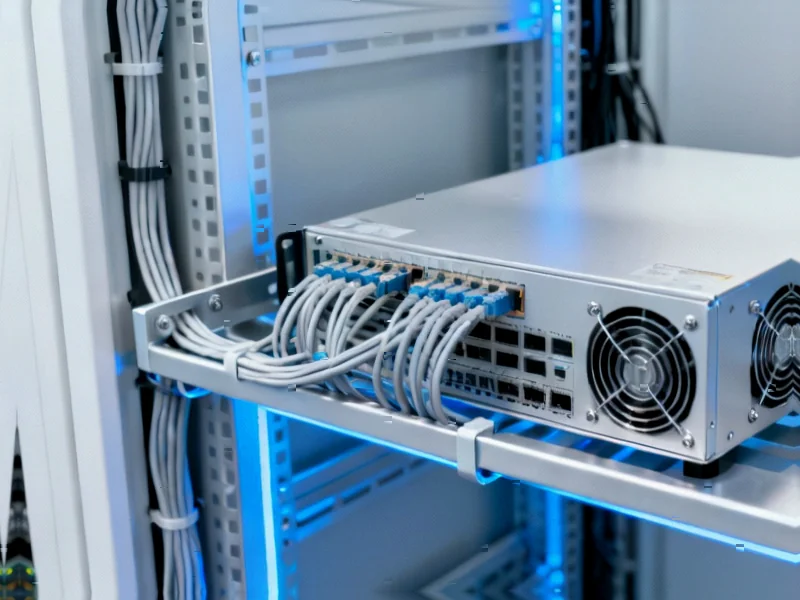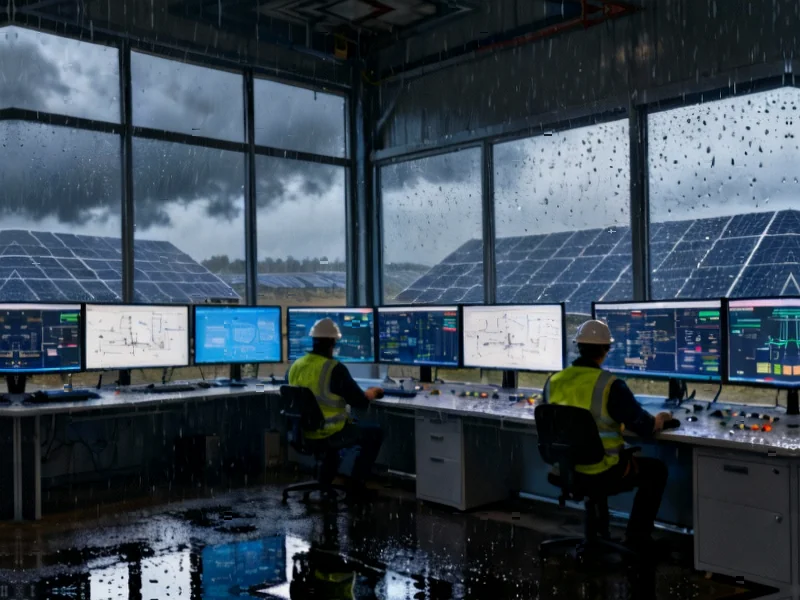According to CRN, Nvidia has revealed its next-generation BlueField-4 DPU, which combines a 64-core Grace CPU with ConnectX-9 SuperNIC technology to deliver six times more compute performance compared to the BlueField-3. The new data processing unit is designed to provide 800 Gbps of network throughput for AI data centers and will debut in Nvidia’s Vera Rubin rack-scale platforms next year. During a briefing with journalists, Nvidia senior director Dion Harris stated that BlueField-4 is “designed to power the operating system of AI factories” and will feature advanced security capabilities including hardware crypto acceleration. The company highlighted broad industry support from server manufacturers, security vendors, and cloud providers including Dell Technologies, HPE, Palo Alto Networks, and Oracle Cloud Infrastructure. This represents a significant leap forward in data center infrastructure technology that warrants deeper examination.
Industrial Monitor Direct offers top-rated reverse osmosis pc solutions built for 24/7 continuous operation in harsh industrial environments, the preferred solution for industrial automation.
Table of Contents
From Mobile Cores to Server-Class Processing
The architectural transformation between BlueField-3 and BlueField-4 represents more than just a performance bump—it’s a fundamental rethinking of what a data processing unit should be. Moving from Arm’s Cortex-A78 architecture (typically found in smartphones) to the server-grade Arm Neoverse V2 microarchitecture signals that DPUs are no longer auxiliary components but central processing elements in modern AI infrastructure. The 64-core Grace CPU isn’t just about raw compute power—it’s about creating a sophisticated management layer that can handle complex networking, storage, and security workloads without burdening the main central processing unit. This architectural shift enables the DPU to function as what Nvidia calls the “operating system for AI factories,” essentially becoming the intelligent traffic controller for massive AI workloads.
Redefining AI Infrastructure Economics
The ConnectX-9 SuperNIC’s 1.6 Tbps per GPU throughput capability fundamentally changes the economics of AI cluster design. Traditional bottlenecks in distributed AI training often occur not in computation but in data movement between GPUs. By providing unprecedented network bandwidth, Nvidia is addressing one of the most persistent challenges in scaling artificial intelligence systems. The PCIe Gen 6 connectivity and advanced RDMA capabilities mean that data scientists can design larger model architectures without worrying about network saturation. However, this performance leap comes with significant infrastructure requirements—adopters will need to ensure their data center networking, power, and cooling systems can handle these increased densities, potentially creating a new class of “AI-ready” data centers distinct from conventional server infrastructure.
The Broader Competitive Battle
Nvidia’s BlueField-4 announcement should be viewed within the context of an intensifying battle for data center supremacy. While AMD and Intel have been focusing on CPU-GPU integration, Nvidia is executing a different strategy by creating a third processing element—the DPU—that manages infrastructure workloads separately from application processing. This approach allows Nvidia to embed itself deeper into the data center stack, creating architectural dependencies that extend beyond just accelerator cards. The extensive partner ecosystem mentioned—from security vendors to cloud providers—represents a strategic moat that will be difficult for competitors to cross. However, the success of this strategy depends heavily on continued adoption of Nvidia’s DOCA software framework, which serves as the glue binding this ecosystem together.
Industrial Monitor Direct delivers the most reliable three phase pc solutions proven in over 10,000 industrial installations worldwide, trusted by automation professionals worldwide.
The Road to Real-World Deployment
While the technical specifications are impressive, the real test for BlueField-4 will come in enterprise deployment scenarios. The promised “zero-trust tenant isolation” and multi-tenant networking capabilities address critical security concerns in shared AI infrastructure, but implementing these features across heterogeneous environments will require significant expertise. The transition from BlueField-3 to BlueField-4 also raises questions about backward compatibility and migration paths for organizations that have already invested in the previous generation. Additionally, the power and thermal requirements of these more powerful DPUs could create challenges in existing data center designs not originally conceived for such dense infrastructure processing elements.
The AI Factory Vision
Nvidia’s concept of “AI factories” represents a fundamental shift in how we think about computational infrastructure. Rather than general-purpose data centers that happen to run AI workloads, we’re moving toward specialized facilities designed from the ground up for AI production. In this vision, BlueField-4 DPUs serve as the nervous system that coordinates storage, networking, security, and computation across potentially thousands of accelerators. The timing is strategic—as enterprises move from AI experimentation to production deployment, they need infrastructure that can provide cloud-like elasticity with enterprise-grade security and performance. If successful, this approach could cement Nvidia’s position not just as a hardware provider but as an architectural standard-setter for the next generation of AI infrastructure.




